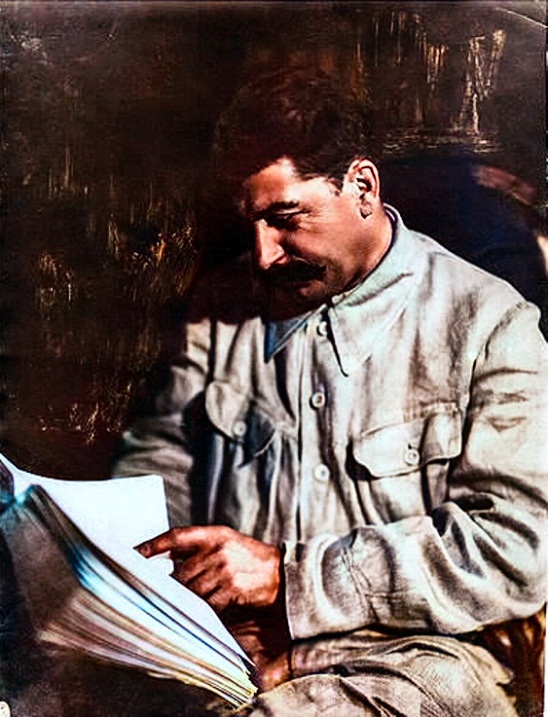“Even more stringent benefit cuts are on the cards.” “Ministers are planning billions in cuts to disability benefits.” “the House of Lords economic affairs committee said this might not be enough.”
FFS just legalise euthanasia already. I’d rather get a quick injection than starve to death out on the streets. Even the Nazis were kinder to the disabled, gassing them to death quickly.


People 10-100k years ago, what pop culture call “cavemen”, took care of disabled people better.
Even medieval euros weren’t so fucking cruel.
https://www.sciencedirect.com/science/article/abs/pii/S1879981711000064
"The provision and receipt of health care may therefore reflect some of the most fundamental aspects of a culture. "
https://www.nytimes.com/2012/12/18/science/ancient-bones-that-tell-a-story-of-compassion.html
nyt article text
While it is a painful truism that brutality and violence are at least as old as humanity, so, it seems, is caring for the sick and disabled.
And some archaeologists are suggesting a closer, more systematic look at how prehistoric people — who may have left only their bones — treated illness, injury and incapacitation. Call it the archaeology of health care.
The case that led Lorna Tilley and Marc Oxenham of Australian National University in Canberra to this idea is that of a profoundly ill young man who lived 4,000 years ago in what is now northern Vietnam and was buried, as were others in his culture, at a site known as Man Bac.
Almost all the other skeletons at the site, south of Hanoi and about 15 miles from the coast, lie straight. Burial 9, as both the remains and the once living person are known, was laid to rest curled in the fetal position. When Ms. Tilley, a graduate student in archaeology, and Dr. Oxenham, a professor, excavated and examined the skeleton in 2007 it became clear why. His fused vertebrae, weak bones and other evidence suggested that he lies in death as he did in life, bent and crippled by disease.
They gathered that he became paralyzed from the waist down before adolescence, the result of a congenital disease known as Klippel-Feil syndrome. He had little, if any, use of his arms and could not have fed himself or kept himself clean. But he lived another 10 years or so.
They concluded that the people around him who had no metal and lived by fishing, hunting and raising barely domesticated pigs, took the time and care to tend to his every need. Image
“There’s an emotional experience in excavating any human being, a feeling of awe,” Ms. Tilley said, and a responsibility “to tell the story with as much accuracy and humanity as we can.”
This case, and other similar, if less extreme examples of illness and disability, have prompted Ms. Tilley and Dr. Oxenham to ask what the dimensions of such a story are, what care for the sick and injured says about the culture that provided it.
The archaeologists described the extent of Burial 9’s disability in a paper in Anthropological Science in 2009. Two years later, they returned to the case to address the issue of health care head on. “The provision and receipt of health care may therefore reflect some of the most fundamental aspects of a culture,” the two archaeologists wrote in The International Journal of Paleopathology.
And earlier this year, in proposing what she calls a “bioarchaeology of care,” Ms. Tilley wrote that this field of study “has the potential to provide important — and possibly unique — insights into the lives of those under study.” In the case of Burial 9, she says, not only does his care indicate tolerance and cooperation in his culture, but suggests that he himself had a sense of his own worth and a strong will to live. Without that, she says, he could not have stayed alive.
“I’m obviously not the first archaeologist” to notice evidence of people who needed help to survive in stone age or other early cultures, she said. Nor does her method “come out of the blue.” It is based on and extends previous work.
Among archaeological finds, she said, she knows “about 30 cases in which the disease or pathology was so severe, they must have had care in order to survive.” And she said there are certainly more such cases to be described. “I am totally confident that there are almost any number of case studies where direct support or accommodation was necessary.” Image The Man Bac burial site.Credit…Lorna Tilley
Such cases include at least one Neanderthal, Shanidar 1, from a site in Iraq, dating to 45,000 years ago, who died around age 50 with one arm amputated, loss of vision in one eye and other injuries. Another is Windover boy from about 7,500 years ago, found in Florida, who had a severe congenital spinal malformation known as spina bifida, and lived to around age 15. D. N. Dickel and G. H. Doran, from Florida State University wrote the original paper on the case in 1989, and they concluded that contrary to popular stereotypes of prehistoric people, “under some conditions life 7,500 years ago included an ability and willingness to help and sustain the chronically ill and handicapped.”
In another well-known case, the skeleton of a teenage boy, Romito 2, found at a site in Italy in the 1980s, and dating to 10,000 years ago, showed a form of severe dwarfism that left the boy with very short arms. His people were nomadic and they lived by hunting and gathering. He didn’t need nursing care, but the group would have had to accept that he couldn’t run at the same pace or participate in hunting in the same way others did.
Ms. Tilley gained her undergraduate degree in psychology in 1982 and worked in the health care industry studying treatment outcomes before coming to the study of archaeology. She said her experience influenced her interest in ancient health care.
What she proposes, in papers with Dr. Oxenham and in a dissertation in progress, is a standard four-stage method for studying ancient remains of disabled or ill individuals with an eye to understanding their societies. She sets up several stages of investigation: first, establishing what was wrong with a person; second, describing the impact of the illness or disability given the way of life followed in that culture; and third, concluding what level of care would have needed.
A paralyzed person, for example, would need “direct support” similar to nursing care while someone like Romito 2 would need “accommodation,” that is to say tolerance of his limitations and some assistance.
Debra L. Martin, associate professor of biological anthropology at the University of Nevada, Las Vegas, invited Ms. Tilley to write “The Bioarchaeology of Care” for a special report on new directions in bioarchaeology published this year in the Archaeological Record, the magazine of the Society for American Archaeology. Image CRUCIAL CLUE Skeletons at the Man Bac burial ground. Their straight postures suggest that Burial 9’s fetal position was evidence of severe disability.Credit…Lorna Tilley
She said in an e-mail that what Ms. Tilley proposes “is a very nicely integrated approach” to using all the available evidence. “Lorna’s innovative approach,” she said, “has provided a way to move from the bones of individuals to thinking about the community as a whole.”
The fourth stage in the proposed method is where the gathered facts form the basis for interpretation. Extrapolating from hard evidence drawn from human remains to conclusions about how people lived is at the heart of bioarchaeology, a word coined in the 1970s by Jane E. Buikstra at Arizona State University to describe using the methods of physical anthropology, which concentrates on the bones, and those of archaeology, which concentrates on the culture and its artifacts, to try to “people the past,” as she phrases it, to put ancient people into a cultural context.
Dr. Buikstra, director of the Center for Bioarchaeological Research, who currently concentrates on the co-evolution of humans and their diseases, said that “People have from time to time across the years tried to attribute caring and caring for” to ancient humans. But, she said, “getting into the minds of ancient people” is always difficult. Ms. Tilley’s methods for how and when to make that kind of leap would base such attempts on standards used today for evaluating health care needs for severely disabled people.
Dr. Martin, who studies violence and illness as well, gave an example from her own work of the sort of case that can benefit from Ms. Tilley’s approach. The case is described in a coming book, “The Bioarchaeology of Individuals.” A skeleton of a young woman about 18 years old from a site on the Arabian Peninsula more than 4,000 years old indicated that the woman had a neuromuscular disease, perhaps polio.
“Her condition likely made it difficult for her to walk,” Dr. Martin wrote in an e-mail. “She had exceedingly thin arm and leg bones with very little buildup of normal muscle attachments.” She probably received round-the-clock care, Dr. Martin concluded.
But one problem that she had was apparently not a result of the disease. The teeth that she had were full of cavities, and she was “missing teeth from abscesses and periodontal disease.”
Those who cared for the young woman may have been too kind, Dr. Martin said. Her people grew dates, and, “Perhaps to make her happy, they fed her a lot of sticky, gummy dates, which eventually just rotted her teeth out, unusual for someone so young.